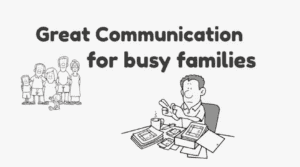Caring for kids with disabilities can be a lot of work for families. Handling school and setting up meetings can be a job in itself and it is important that schools communicate with families in a meaningful way. Sometimes, the information you get regarding your child is full of complicated words, making it hard to understand.
But, there’s a simple fix. It’s called “Plain Language.” Plain language is using clear and easy words so everyone gets it the first time they read it. We show you plain language examples by using short sentences, simple words, and friendly formatting. When you talk to families in a way that’s easy to understand, they’re more likely to get what you’re saying and help you effectively communicate with parents.
Watch this short video on how you can improve your plain language skills to build trust with families.
Transcript:
[Narrator] Families who care for children with disabilities are busy.
Usually, there’s a ton of paperwork involved with their child’s school, IEP Meetings need to be scheduled, and when you get a letter with important information about your child, it should be easy to read.
A lot of times, there are a ton of filler words and jargon that make it take a lot longer to get to the point.
Simply put, important information about your child should be easy to read!
But, we’ve got an idea on how to fix it. Have you heard of plain language?
“Plain Language” is simple, clear language that people can easily understand the first time they hear or read it.
When families read information that’s easy to understand, they get what you’re trying to say and are more likely to respond.
Here’s an example of how we use plain language and why it is important:
Take a look at this letter. While you may be able to understand it, there are a lot of unnecessary words that make it longer to read.
Here’s how we changed the letter into plain language. Even without reading it, you can see it looks easier and friendlier. Writing in plain language is not easy. But it’s worth it! Your communication with students’ families will be more effective, and the families will feel that you care enough to make things easier for them. This goes a long way to building trust and better family engagement.
(1) State the goal at the beginning.
(2) Use spacing, short sentences, and simple words.
(3) Use formatting to chunk information into smaller pieces and highlight the most important points.
(4) Define jargon and acronyms if you have to include them.
(5) Use a conversational style and try to show the reader you care about them as a person.
Now, you have some basic tools to make your communication clear and concise with families!
Visit www.exceptionallives.org and click on the “for schools page” for more information on how our team can support you.



